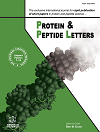
Full text loading...
Members of the 14-3-3 protein family are involved in various cellular processes, including migration, angiogenesis, cell cycle, apoptosis, and signal transduction. Nevertheless, the 14-3-3 family possibly plays a fundamental role in the development of diseases and cancer by regulating various biological pathways. MicroRNAs (miRNAs) are mainly transcribed by RNA polymerase II (pol II), with only a few exceptions involving RNA polymerase III (pol III). They can control cell mechanisms through different pathways. miRNAs inhibit or destroy mRNAs by binding to them. They control intracellular mechanisms by binding to molecules such as the 14-3-3ζ protein. miRNAs play a role in regulating this protein, and by inducing or suppressing it, they contribute to either the development or the prevention of the diseases. Therefore, considering the importance of the 14-3-3ζ protein in different pathways within the body, we decided to investigate the relationship between miRNAs and 14-3-3ζ and clarify their interactions, in this review.

Article metrics loading...

Full text loading...
References


Data & Media loading...

